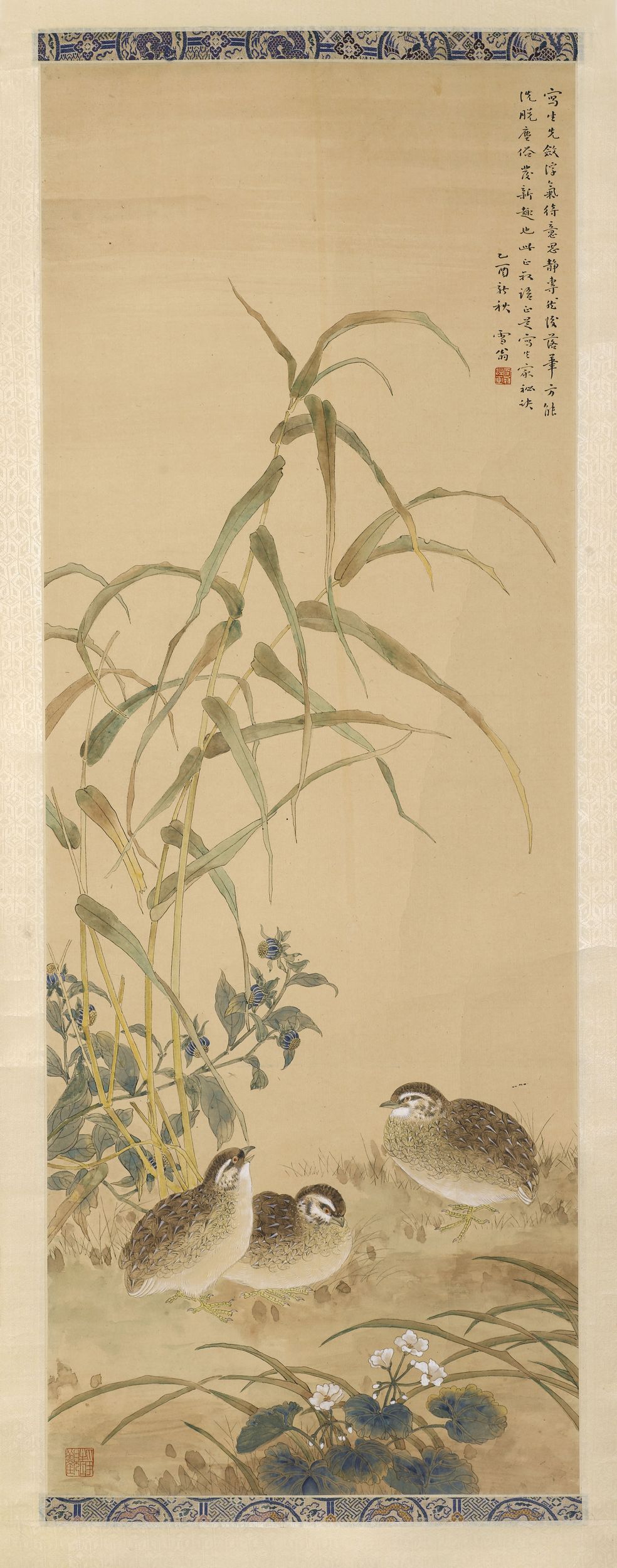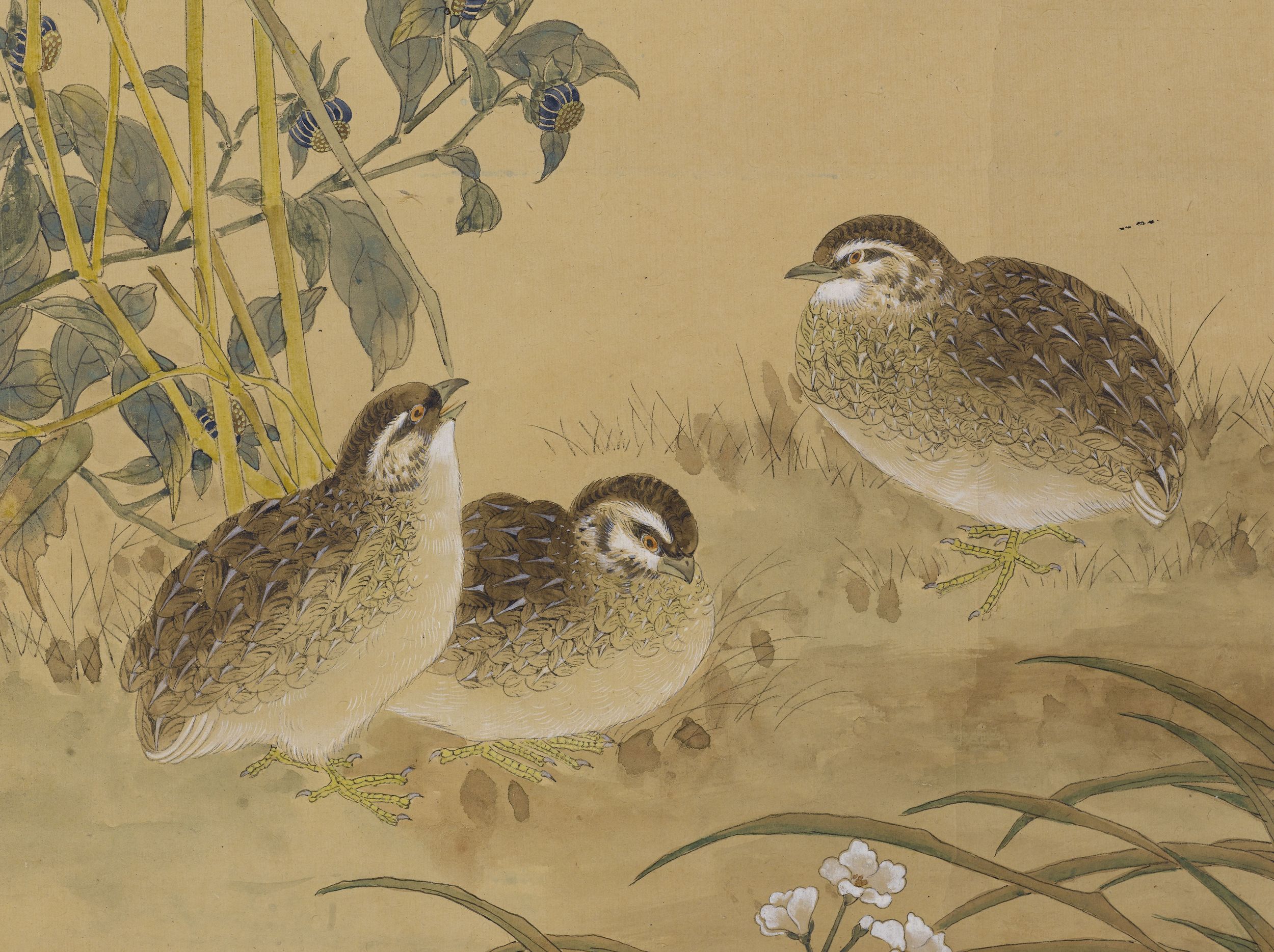
Cailles
Peinture
"Pour peindre la nature, il faut d'abord supprimer l'esprit flottant et attendre que la pensée soit calme et attentive pour peindre. C'est ainsi qu'on se détache de la vulgarité pour découvrir de nouvelles merveilles. Ce sont les paroles de Zheng Shu [surnom du peintre et poète Yun Shouping, 1633 - 1690] et c'est justement le secret du paysagiste. Au début de l'automne de l'année cyclique Yiyou (1945). Xue Weng [surnom du peintre]"
Don manuel : Guo, Youshou 郭有守, Docteur
M.C. 8717
Chen Zhifo was born in present-day Cixi 慈溪 in Zhejiang. Besides his repute as a painter, he is considered one of China’s pioneers of modern graphic design. His interest in the study of decorative motifs dated back to his training in industrial textile techniques between 1912 and 1916. From 1918 to 1923, Chen Zhifo pursued his studies in Japan, in the department of applied arts at the Tokyo Fine Arts School. On his return to China, he settled in Shanghai, where he taught graphic design. His work, which was in step with the rise of the illustrated press, reflects his interest in both the decorative vocabulary of ancient civilisations and the manifestations of modernity. In 1931, he taught at the National Central University of Nanjing. This new environment appears to have played an important role in the development of his painted work. In 1934, he exhibited a painting under the courtesy name Xue Weng 雪翁 for the first time. This work was in the gongbi style, a meticulous type of execution that produced a detailed description of animals and nature. In the work of Chen Zhifo, these naturalistic effects had a decorative quality inherited from his graphic work. His work as a painter would only be fully recognised from 1942: at his first solo exhibition, Chen Shuren saw in him a “modern Huang Quan 黄筌 (903-965)”. In the post-war years, he continued to explore the vast register of flowers and birds, remaining loyal to the demanding gongbi technique until his death in 1962.
